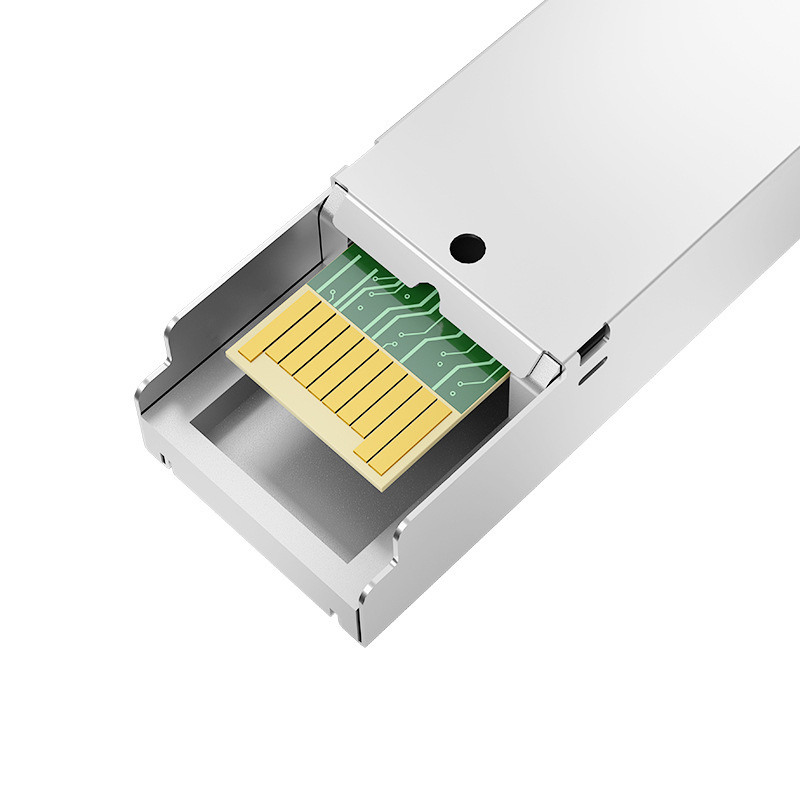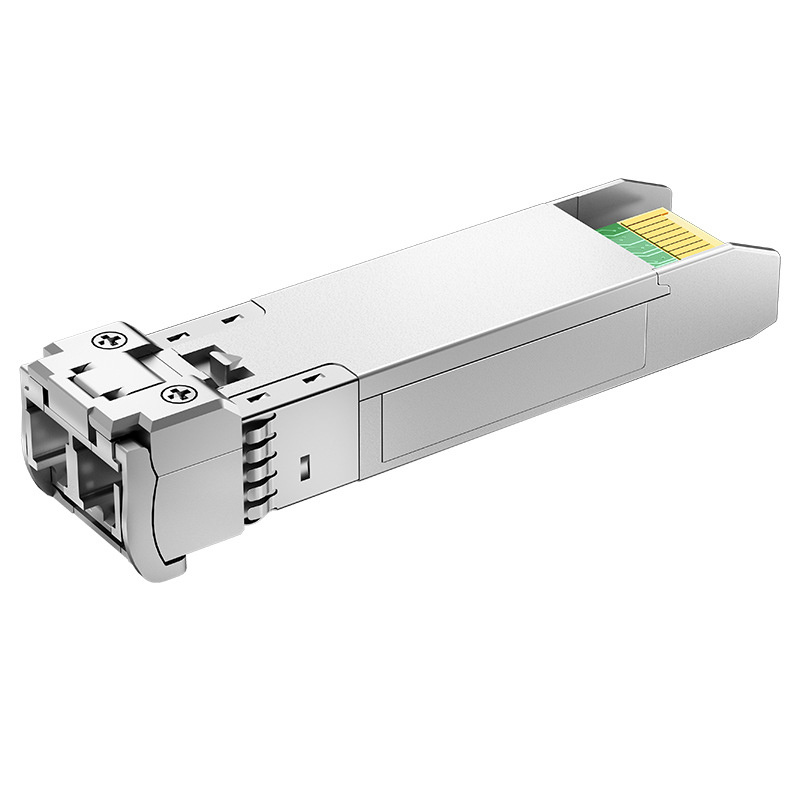08
2025
-
07
1.25g optical module transmission speed
Author:
The transmission rate of a 1.25G optical module is 1.25Gbps (gigabits per second) which is equivalent to 1250Mbps. This rate conforms to Gigabit Ethernet standards (such as IEEE 802.3z 1000BASE-SX/LX/LH, etc.), and is mainly used in the following scenarios:

I. Core Performance and Technical Characteristics
Rate and Standardization
1.25G is an internationally standardized rate level (based on the STM-8 standard), and its actual rate is 1244.16Mbps, usually simplified to 1.25Gbps. This rate is used as a mainstream configuration in EPON (Ethernet Passive Optical Network) for OLT (Optical Line Terminal) and ONU (Optical Network Unit), and is also compatible with 1G Fibre Channel (FC) and Synchronous Optical Network (SONET/SDH).
Transmission Distance and Fiber Type
Rate is independent of transmission distance; the specific distance is determined by the fiber type and module design:
- Multi-mode fiber (MMF) With an 850nm wavelength VCSEL laser, the maximum transmission distance is 550 meters (such as 1000BASE-SX).
- Single-mode fiber (SMF) Using a 1310nm or 1550nm wavelength DFB laser, it can cover 10km to 120km (such as 1000BASE-LX/LH/ZX). For example, Changfei Optical Fiber's 1000BASE-ZX module supports single-mode fiber transmission of 120km.
Interface and Packaging
Commonly uses SFP packaging (small form-factor pluggable), with an LC duplex interface, supporting hot-plugging and DDM (digital diagnostic monitoring) functions, allowing real-time monitoring of optical power, temperature, and other parameters. Some industrial-grade modules (such as 1x9 packaging) also have wide temperature adaptability (-40℃ to +105℃), suitable for extreme environments such as mines and military applications.

II. Application Scenarios
Enterprise Network
Used for campus network backbone links, server and switch interconnection, for example, Cisco GLC-LH-SM module supports 10km transmission on single-mode fiber, meeting the needs of cross-building connections.
Access Network and FTTx
In EPON systems, the 1.25G optical module serves as a core component for OLT and ONU, providing symmetrical or asymmetrical uplink and downlink rates (such as 1.25Gbps downlink, 1.25Gbps uplink). Operators can use single-fiber bidirectional (BIDI) technology to achieve low-cost fiber multiplexing, for example, the 1.25G BX20 module supports single-fiber 20km transmission.
Storage and Data Center
Compatible with the FC protocol, used for connecting servers and storage devices in SAN (Storage Area Network), for example, E-TEN's SX module can be used with OM2 multi-mode fiber to achieve high-speed data transmission within 550 meters.

III. Compatibility and Precautions
Compatibility with 10G Devices
1.25G optical modules can be used in 10G ports, but the rate will be limited to 1.25Gbps, and the performance of the 10G port cannot be fully utilized. For example, Huawei's eSFP-GE-SX-MM850 module only supports Gigabit rates in a 10G switch.
Wavelength and Fiber Matching
The corresponding wavelength should be selected according to the fiber type:
- Multi-mode fiber (MMF): Use 850nm wavelength (such as 1000BASE-SX).
- Single-mode fiber (SMF): Use 1310nm or 1550nm wavelength (such as 1000BASE-LX/LH). If a single-mode module is mistakenly used with multi-mode fiber, it may cause signal attenuation or communication failure.
Power Consumption and Heat Dissipation
Typical power consumption is less than 1W FS.com , but industrial-grade modules need to pay attention to heat dissipation design in high-temperature environments. For example, the 24Pin chip module from Guangte Communication ensures long-term stability through temperature compensation circuits.
IV. Typical Models and Parameter Examples
| Standard | Wavelength | Transmission Distance | Laser Type | Interface | Applicable Fiber |
|---|---|---|---|---|---|
| 1000BASE-SX | 850nm | 550m | VCSEL | LC | Multi-mode fiber (OM2) |
| 1000BASE-LX | 1310nm | 10km | FP | LC | Single-mode fiber |
| 1000BASE-LH | 1550nm | 40km | DFB | LC | Single-mode fiber |
| 1000BASE-ZX | 1550nm | 120km | DFB+APD | LC | Single-mode fiber |
(Data source:)
Summary
The 1.25G optical module is based on a stable rate of 1.25Gbps. Through flexible wavelength and packaging design, it covers transmission requirements from 550 meters to 120 kilometers and is widely used in enterprise, operator, and data center networks. When selecting, it is necessary to comprehensively consider the fiber type, distance, and equipment compatibility. For example, long-distance transmission should prioritize single-mode modules with DFB lasers, while low-cost VCSEL solutions can be used for short-distance multi-mode scenarios.
SFP optical module
Previous Page
21
2025-07
How amazing are RJ45 modules? Office network cabling finally says goodbye to "a mess"
21
2025-07
19
2025-07
19
2025-07
11
2025-07
Is a 1.25g optical module a Gigabit module?
08
2025-07
1.25g optical module transmission speed
08
2025-07
Can SFP optical modules with wavelengths of 850nm and 1310nm be used interchangeably?
Contact Us
Factory add: NO.54. Jinhu South Road, Chenjiang Town, Zhongkai Hi-tech Zone, Huicheng District, Huizhou city, China
Telephone:0752-2099791
Office add: B901-1, Silver Star Hi-Tech Building, No. 1301 Guanguang Road, Longhua District, Shenzhen, China
Website:www.jiaxunzg.cn
Telephone:0755-81752121
Fax: 0755-81752963
Mailbox:sales1@jiaxunzg.cn
Mailbox:sales2@jiaxunzg.cn
Mailbox:sales3@jiaxunzg.cn
Copyright © 2024 Jiaxun (Huizhou) Intelligent Technology Co., Ltd. Privacy Policy






